Overview of the 9-Day Everest Region Short Trek in Nepal
If you’re dreaming about Everest but don’t have weeks to spare, the Everest Region Short Trek is exactly what you’ve been looking for. In just 9 days, this compact adventure pulls you deep into the heart of the Khumbu region — where ancient trails twist through pine forests, prayer flags flap against Himalayan wind, and snowy peaks like Ama Dablam, Thamserku, and even Mount Everest show up without a warning. It’s not the full base camp grind, but make no mistake — this trek is wild, scenic, and deeply rewarding. You’ll pass through Sherpa villages like Namche Bazaar, cross dizzying suspension bridges, and soak in views most people only dream about. For anyone wanting a short Everest trek in Nepal that still hits hard with nature, culture, and altitude, this one’s a no-brainer.
This 9-day rollercoaster through the Khumbu Valley is pure Himalayan madness. You kick off with the infamous Lukla landing—no joke, that tiny runway makes you pray like your life depends on it. From there, it’s days of hiking through thick pine forests smelling like damp earth and juniper, with trails that toss you between crumbling stone steps, creaky suspension bridges swaying over raging rivers, and those sudden moments when Ama Dablam just shows up like a snow-capped showstopper. Altitude here is tricky—Tengboche sits at 3,870m, just high enough to make your head spin while you sip your morning tea staring up at Everest, but not quite high enough to wreck you completely.
But here’s the kicker: this place messes with your head—in the best way. One minute, you’re grumbling over the thousandth staircase to Namche, the next you’re sitting silent, soaked in monks’ chants as the whole Everest range blushes pink at sunrise. You’ll swap war stories about blisters with fellow trekkers, develop a strange addiction to garlic soup (seriously, it’s altitude magic), and finally get why Sherpas chuckle when you whine “how much farther?” The terrain’s brutal honesty keeps you in check—rocky descents that wreck your knees, fogged-in valleys where yaks appear out of nowhere like mountain ghosts, and that last climb to Tengboche where every wheeze and gasp is worth it for the best damn view on this side of base camp.
Nature’s Wild Symphony: Flora and Fauna on the Everest Region Short Trek
Listen, this trek doesn’t just slap you with killer views — it throws you headfirst into a jungle that’s basically nature’s own crazy art show. Right after surviving that Lukla landing (which feels like skydiving into a runway the size of a parking lot), it’s into thick rhododendron forests that don’t mess around. These bushes aren’t some dainty garden plants; they explode in fiery reds and pinks come spring, like the mountains just decided to throw paint everywhere and call it a day. Chhomrong and Dovan? Those spots smell like pine soaked in fresh rain and moss that sticks to your boots like it’s part of the hike now.
Forget your comfy city parks — this place is wild. The Himalayan monal struts around like it owns the joint, flashing feathers so bright it could blind you if it wanted. Higher up, the forests thin, making way for alpine meadows where wildflowers are a total riot of color, clinging desperately to rocky slopes like rebels refusing to quit. The plants here aren’t just surviving; they’re straight-up battling the elements every single day.
And the animals? Buckle up. Himalayan tahrs — these tough mountain goats with attitude — bounce over cliffs like gravity’s just a suggestion. Musk deer sneak around like shy little ghosts, popping up when nobody’s looking, while yaks casually block the path like the real traffic cops of the Himalayas. Those yak bells ringing? That’s the soundtrack of stubbornness and mountain swagger.
Tiny creatures steal the show too. Pikas, those round fuzzy things, sound like squeaky toys echoing through the valley. Bumblebees zoom around like they’re late for some nectar rave, and butterflies flutter so wildly they put any Instagram filter to shame. This trek isn’t just about towering peaks — it’s a whole ecosystem that’s tough, messy, and beautiful all at once. The cold mountain air? It’s like breathing in ancient secrets, and every yak bell tinkle pulls you deeper into this wild, untamed Himalayan story.
Route Overview: Everest Region Short Trek (9 Days)
Flight into Lukla? Forget romantic vistas—it’s jittery, hair‑raising fun. That cliffside runway makes your heart do jazz hands as you pray you don’t end up in a valley. But once boots meet trail, adrenaline instantly switches to awe. The path plunges into rhododendron and pine forests, moss‑slicked and dripping with Himalayan humidity. Prayer flags flap overhead, bolting you to the Khumbu’s living drama.
Push past Namche Bazaar, that “town” perched at 3,440 m, and you feel altitude in your lungs before you see Everest’s tip. Namche’s the cultural nexus—gear shops, chai stalls, and Sherpa faces that tell you the region isn’t a tourist trap, it’s a lifetime deeply lived. Crank above that to the Everest View Hotel, perched at around 3,880 m, with front‑row glimpses of Mount Everest, Ama Dablam, and Lhotse.
(Pro tip: Watch morning prayer ceremony at Tengboche Monastery. The chants at 3,867 m will pry open something in your chest.)
That stretch through Tengboche—no fluff—feels like crossing into reverence. The hike carves through sparse rhododendron meadows and sacred groves, each step louder than the last. Yaks graze the slopes like they own the place. Silence becomes the soundtrack, broken only by monks’ bells and distant avalanche rumbles. Every punishing uphill is paid back in Panoramas on steroids.
Descent is just as wild—but different. Returning via Namche and back to Lukla feels less like backtracking and more like unpeeling layers of mental and physical grit. The trail that was brutal on the climb now feels like homeground. When wings lift off Lukla on Day 7 or 8, it hits—this wasn’t a short trek mentality, it was full‑immersion Himalayan therapy.
Touchdown in Kathmandu and the sensory overload comes full circle. The same chaos, the same traffic, but now quieter, reshaped. Prayer flags have replaced car horns. Nights might bring street food, but the mind smells pine smoke and hears echoes from 3,000 m. Short? Sure. But this trek packs Everest region highlights into one emotional loop that quacks like chaos and humbles like altitude. That’s the Everest Region Short Trek—technical, brutal, soul‑rewiring.
🔥 Why This Everest Panorama Trek Will Wreck Your Soul
If you’re not ready to have your breath taken away (literally and emotionally), stop reading. This isn’t the Everest Base Camp trek—this is the Everest Panorama Trek, the underrated gem that lets you flirt with the giants of the Himalayas without totally wrecking your knees. Think jaw-dropping views of Mount Everest, sunrise tea at the iconic Everest View Hotel (3,880m), prayer flags whipping in the wind above Tengboche Monastery, and cozy nights in bustling Namche Bazaar. It’s short, it’s powerful, and it’s designed for people who want a real Himalayan fix—but don’t have three weeks to throw at altitude hell. Here’s why this trek slaps harder than you’d expect:
✨ Top Highlights of the Everest Panorama Trek
- Catch your first real glimpse of Mount Everest from Everest View Hotel (3,880m) – sunrise here feels like the mountain gods hit you with enlightenment and a fresh dose of altitude.
- Land in Lukla on one of the world’s most hair-raising runways (2,860m) – because nothing screams “I’m alive” like a cliff-edge touchdown in the clouds.
- Trek through Namche Bazaar (3,440m), the heart of Sherpa culture and coffee shops – it’s half-mountain village, half Base Camp Instagram preview, and all vibes.
- Stand in awe before Tengboche Monastery (3,867m), framed by Ama Dablam and Everest – monks chanting, incense rising, and views so sacred they feel illegal.
- Walk ancient trading trails surrounded by rhododendrons, pine forests, and sheer cliffs – this is sensory overload, but in the healing kind of way.
- Taste legit Sherpa stew and buttery yak-milk tea in stone lodges with snow-capped views – your stomach might cry for help, but your soul will hum.
- Experience high-altitude mountain life without the Base Camp burnout – 3,800 meters is enough to taste the thrill without full-blown altitude hangover.
- Spot Himalayan wildlife like Danphe pheasants, mountain goats, and maybe a snow leopard (if the universe likes you) – National Geographic mode: unlocked.
- Feel the energy shift with every fluttering prayer flag and mani stone you pass – this trail isn’t just scenic, it’s spiritual dynamite.
- Close your journey back in Lukla with a final view of the hills that nearly broke you (in the best way) – it’s not goodbye, it’s see-you-soon.
🗓️ The Ultimate Guide to When to Trek the Everest Panorama Route
You ever trek through fog so thick you start doubting reality? Or freeze your toes off at a tea house with no firewood? Yeah—timing your Everest Panorama Trek right is non-negotiable. Unlike the longer Everest Base Camp trek, this short-but-epic journey gives you room to dodge the worst of the weather without missing those postcard-perfect panoramas. Let’s break it down season by season—what slaps, what sucks, and what you might just survive if you’re a chaos-loving legend.
🍁 Autumn (Mid-September to Late November)
→ Best Time to Trek Everest Panorama, Period.
If Everest were a movie star, autumn is when it shows up on the red carpet—dramatic skies, killer lighting, no filters needed. This is prime time, and everyone knows it. Crisp mornings, deep blue skies, 90% visibility days. It’s high season for a reason.
- Weather: Clear, dry, cold but manageable. Day temps around 10–15°C, nights dip below freezing at higher points.
- Views: You’ll see Mount Everest, Ama Dablam, Lhotse, and more like they’ve been photoshopped into the skyline.
- Trails: Dust-free, solid footing, and lots of trekkers (which = better vibes but less solitude).
- Flora/Fauna: Pine forests are sharp green, wildflowers are done blooming, but the crisp air makes everything feel sharper.
Downside: Crowds. Prices go up. Tea houses fill fast. Book early or get ready to cuddle a stranger.
🌸 Spring (March to Early May)
→ Rhododendrons & Himalayan Comeback Energy
Spring is like Everest’s soft launch before the monsoon ruins the party. Think blooms, color pops, and fresh snow still clinging to peaks. The trail’s a little quieter than autumn, but just as magical.
- Weather: Mild days (10–18°C), chilly nights. Less wind than autumn, but skies can turn cloudy in the afternoon.
- Views: Still solid—maybe not as razor-sharp as autumn, but you’ll get that Everest selfie.
- Flora/Fauna: Rhododendron forests explode in red, pink, and white. Birdsong wakes you up. Mountain goats roam.
- Trail Conditions: Mostly dry with a few early-melt patches. Less dust. More smells. (Good ones.)
Downside: Weather’s a bit moodier—expect occasional haze and some late-afternoon cloud tantrums.
☀️ Summer/Monsoon (June to Mid-September)
→ Trekking for the Brave, the Wet, and the Mosquitoed
Unless you’re a National Geographic photographer chasing clouds, this season’s… rough. Think leeches, landslides, fog walls, and damp socks. You might technically survive the Everest Panorama Trek in summer, but it won’t be pretty.
- Weather: Warm, wet, humid. Visibility? Trash. Everest? Hiding behind her rain shawl.
- Trail Conditions: Slippery. Landslide zones activate. Leech population triples.
- Views: What views? Clouds hog the skyline 70% of the time.
- Flora/Fauna: Lush. Greenery is next level. But bugs rule the kingdom now.
- Perks (yes, there are some): Absolute solitude. Nobody else is dumb—I mean, bold—enough to come.
❄️ Winter (Mid-December to February)
→ Snow, Silence & Soul-Touching Skies (But It’s Cold, Bro)
Winter is for the bold—or for those who hate people. This season gives you quiet trails, snow-glazed monasteries, and frozen streams. But with beauty comes chill… and not the chill-vibes kind.
- Weather: Brutal mornings (can drop to -15°C at night), sharp winds. Sun helps during the day.
- Views: Crystal clear on good days. Best sunrises. Everest looks like it’s been dipped in frosting.
- Trail Conditions: Manageable snow cover, but icy patches sneak up on you. Bring spikes or faceplant.
- Crowds: Ghost town. It’s just you, the Sherpas, and your thoughts.
- Perks: Magic. Spiritual. Cheaper rooms, hot fires, no pressure to rush.
🧭 Final Take: So When’s the Move?
- Want best views and crowds? Go October or early November.
- Want wildflowers and softer light? Hit April.
- Crave quiet and don’t mind the freeze? Late December’s your bet.
- Feeling chaotic and waterproof? July will humble you.
The Everest Panorama Trek isn’t just about walking—it’s about timing. Pick the right season and the Himalayas will open up like a spiritual movie set. Pick wrong, and it’s soggy socks, foggy regrets, and invisible mountains.
Eating and Sleeping on the Everest Short Trek: A Survivor's Guide
Let's cut through the brochure trash - this is the real deal on what you'll eat and where you'll crash during those 9 life-changing days in the Khumbu. I learned the hard way when I tried the "yak steak" above Namche (protip: don't).
Teahouses: Your Mountain Crash Pads
From Lukla to Tengboche, you'll bunk in family-run teahouses - think rustic charm meets mountaineer practicality. In Phakding and Namche, you might score a private room with an actual mattress (luxury!). Higher up at Tengboche (3,870m), it's dorm-style with yak wool blankets that smell vaguely of adventure. Pro tip: The Himalayan Lodge in Namche has solar showers that actually get hot if you time it right (2pm-ish).
The Food That Fuels You
Breakfast is carb-loading heaven:
- Tibetan bread (fried dough + honey = life)
- Porridge that sticks to your ribs
- "Everest" omelets (how do they get eggs up here?)
Lunch/Dinner is dal bhat o'clock:
- Unlimited refills of lentils, rice, and veg curry (your stomach will thank you at altitude)
- Momos that taste like heaven after a long hike
- Garlic soup - drink it like medicine against AMS
What to Avoid Like the Plague
- Meat above Namche (that chicken's been hiking longer than you have)
- "Pizza" (often just naan with ketchup)
- Unpeeled raw veggies (remember what fertilizes these fields)
Hygiene Hacks From a Veteran
- Hand sanitizer > washing (pipes freeze at night)
- Sleeping bag liner = cleaner nights
- Baby wipes = "showers" above Namche
- Always carry TP - the squat toilets don't provide it
Real Talk: What No One Tells You
- The apple pie at Himalayan Bakery in Namche will ruin all other desserts for you
- Tea gets more expensive every 1,000m you climb (stock up on bags in Kathmandu)
- That "hot shower" fee sometimes means a bucket of warm water
- You'll develop a weird attachment to your trekking poles
Remember: This isn't the Ritz. It's better - it's real. You'll eat simple food, sleep in basic rooms, and wear the same shirt for days. But when you're sipping ginger tea at 3,870m watching dawn hit Everest, you won't care about thread counts.
Permits & Paperwork: The Real Deal Behind Getting on the Trail
Before setting foot on those rocky Himalayan paths, there’s paperwork. Yep, permits are the gatekeepers to adventure in Nepal — and for this trek, you can’t just show up and walk in. The region is protected, remote, and tightly monitored. And that’s honestly a good thing. Fewer crowds, safer conditions, and more preserved trails.
First off, you’ll need two major permits for this route:
- Sagarmatha National Park Entry Permit
- Khumbu Pasang Lhamu Rural Municipality Permit
Let’s break them down
The Sagarmatha National Park Permit is essential since you’re entering one of the most iconic high-altitude regions in the world — home to Everest herself. This one costs NPR 3,000 (about USD 25) per person for foreigners and can be picked up either in Kathmandu at the Nepal Tourism Board office or directly in Monjo, just before you enter the park boundaries. No need for overthinking — if you’re booking through a legit trekking agency, they’ll usually sort this out for you.
Then there’s the Khumbu Rural Municipality Permit — this replaced the old TIMS card in this region, and it’s non-negotiable. Issued by the local government, it costs NPR 2,000 (roughly USD 17) and has to be obtained either in Lukla or Monjo checkpoint. No TIMS card is required anymore for the Everest region, which honestly streamlines things a bit.
Now, let’s talk logistics. If you’re trekking solo, brace yourself — guides are not mandatory for the Everest region as of now, but trekking without one isn’t everyone’s cup of tea. Regulations can shift fast, especially in high-risk zones, so having a registered guide or porter isn’t just for luxury; it’s a safeguard. And some insurance policies require it. Also, language barriers? Trail changes? Medical emergencies? A good guide’s worth more than gold up here.
As for documents — passport copies, passport-size photos, and cash in Nepali rupees are a must. Card payment? Not happening in those tiny regional offices. So hit an ATM in Kathmandu and prep everything a day before your Lukla flight to avoid the last-minute panic.
Also important — don’t lose your permits. You’ll pass through several checkpoints along the route, especially near Monjo, Namche, and Tengboche. No permit = no pass. Keep them zipped safely in your daypack and snap photos of them as backup.
In summary, trekking permits in Nepal are part of the journey — not just bureaucracy. They help fund conservation, regulate the rush, and keep the Khumbu clean and trekkable. Handle them early, pay attention to rule changes (especially post-COVID travel adjustments), and you’re all set to hike through the heart of the Himalayas without a hitch.
✅ How Fit Do You Need to Be for the Everest Region Short Trek? Let’s Get Real
Forget the idea that the Everest Region Short Trek is some casual walk in the Himalayas — it’s a proper trek that’ll punch your lungs and legs but rewards you with insane mountain views in just 9 days. You’re dealing with altitudes topping around 3,870 meters (Tengboche), so the air thins and your body starts reminding you it’s not made of steel. Expect daily walks between 4 to 7 hours, with some steep climbs, rocky trails, and those infamous stone staircases that never quit.
If you’re someone who enjoys weekend hikes or regular cardio sessions (running, cycling, or even a solid gym routine), you’re already on the right track. But don’t just rely on gym cardio — get used to walking on uneven trails with a backpack, because your knees and ankles will thank you later. The Everest Region trail isn’t technical like mountaineering, but it’s rugged enough that weak ankles and zero endurance will leave you begging for mercy.
Acclimatization is your best friend here — the itinerary wisely includes rest days in Namche Bazaar and time around Tengboche to help your body catch up and dodge altitude sickness (no one wants headaches and nausea ruining those killer views of Everest and Ama Dablam). Don’t underestimate the power of slow and steady — pushing too hard will only backfire.
Preparation? Start with cardio workouts that raise your heart rate for at least 30-60 minutes, 3-4 times a week. Add some stair climbing or hill walking, and toss in strength training focusing on your core, quads, and calves. Also, pack patience — the trail will test your mental grit, especially on those chilly mornings before the sun hits the peaks.
In a nutshell, the Everest Region Short Trek is challenging enough to feel like an accomplishment but doesn’t require elite athlete-level fitness. With consistent prep, respect for the altitude, and a “one step at a time” attitude, you’ll crush this trek and soak in those Himalayan views like a champ.
Ready for the ultimate test of endurance? Embark on our Everest Three Pass Trek , a thrilling expedition that leads you through Nepal’s highest and most scenic mountain passes for an unforgettable adventure.
🧭 Alternative Tours & Packages
- Everest Base Camp Trek
Embark on one of the world’s most iconic treks, journeying through picturesque Sherpa villages, alpine forests, and glaciers, all the way to the legendary Everest Base Camp. - Everest Heli Trek with Kalapatthar Summit
Combine a scenic trek in the Everest region with an exhilarating helicopter flight from Gorakshep and a landing at Kalapatthar for stunning summit views of Everest. - Everest Base Camp Hillary Trek
Follow the classic route taken by Sir Edmund Hillary and Tenzing Norgay, with deep cultural immersion, awe-inspiring landscapes, and a rewarding arrival at Everest Base Camp.
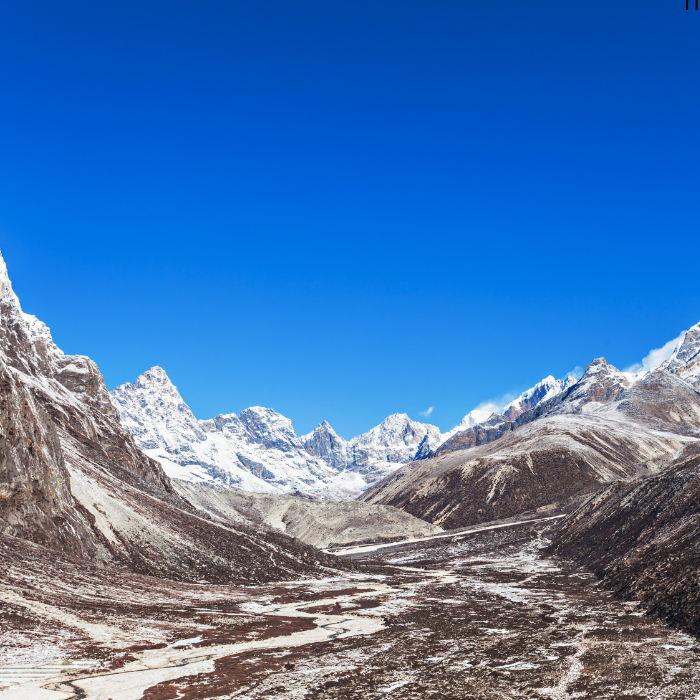
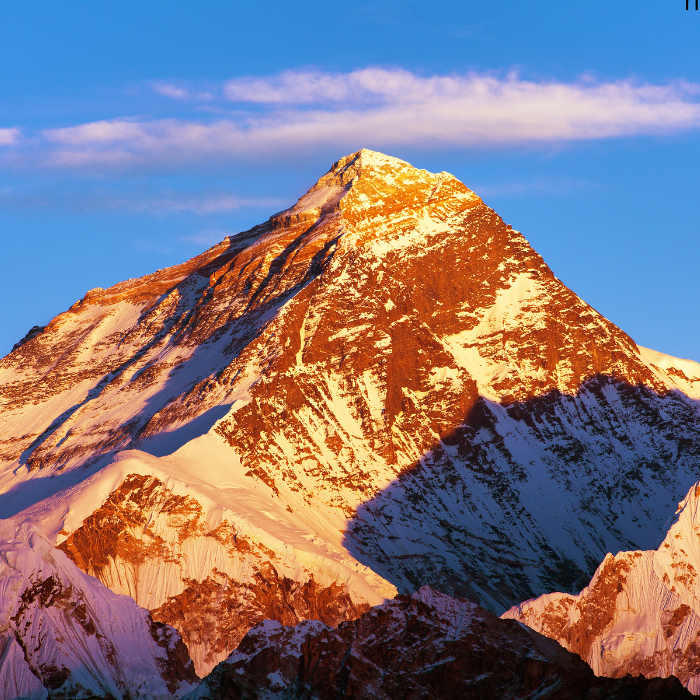


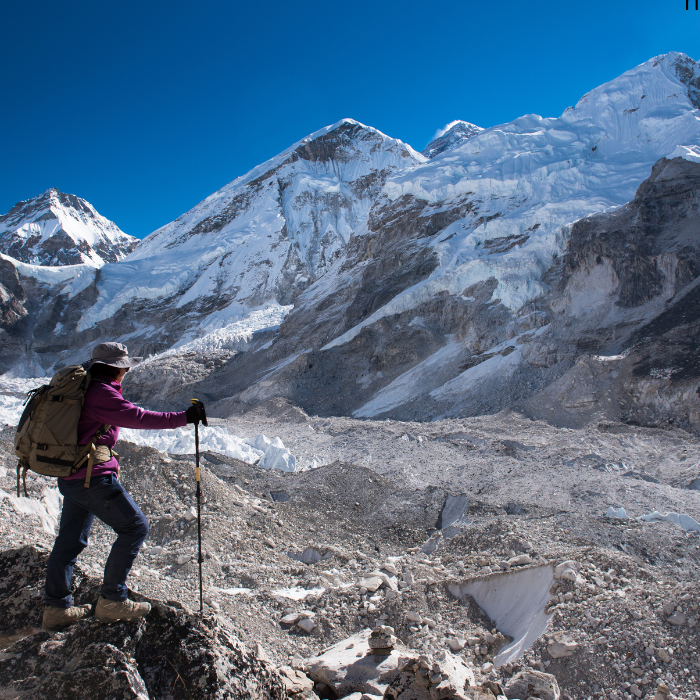
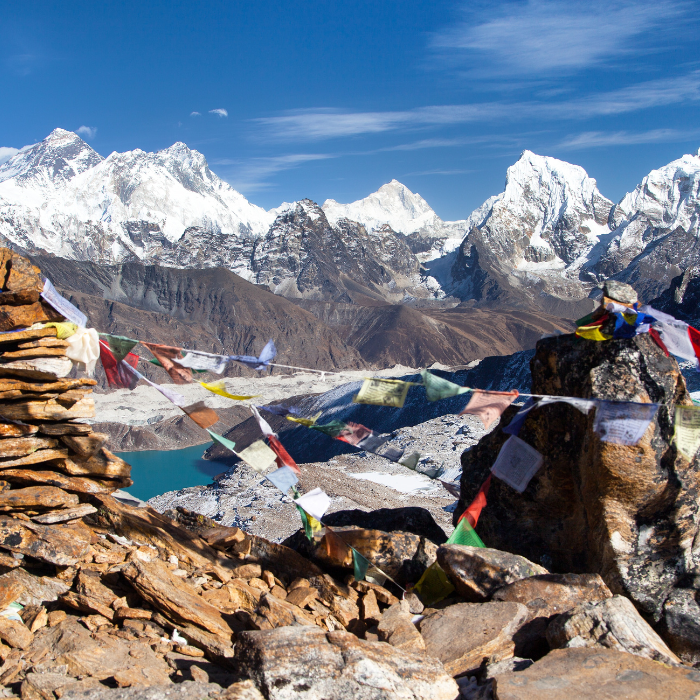


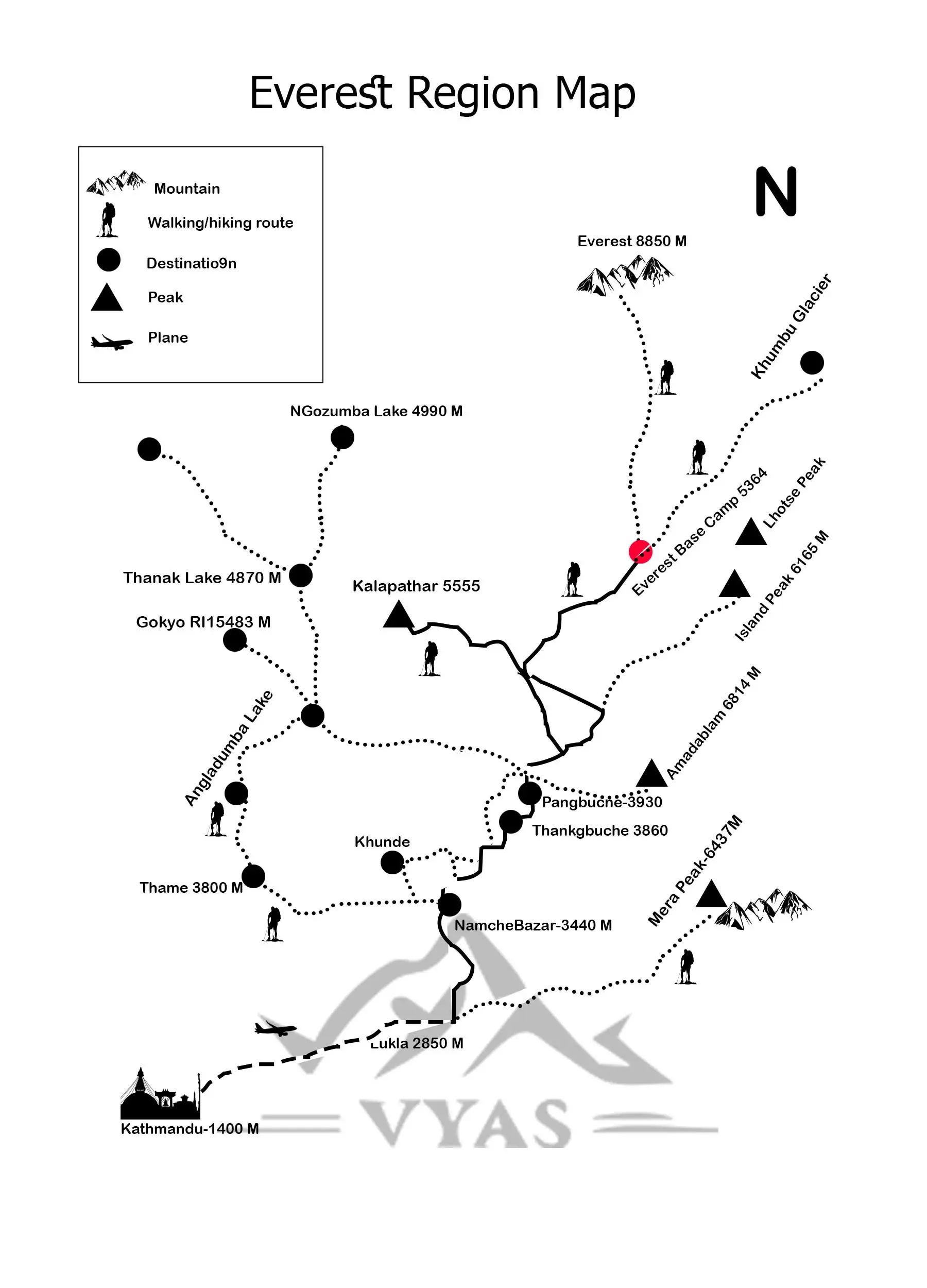






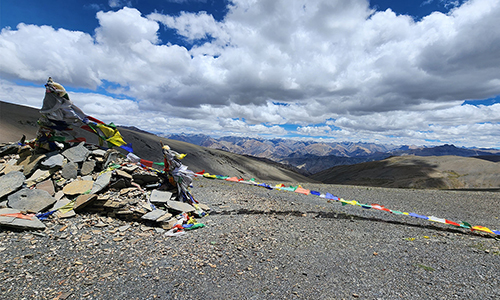

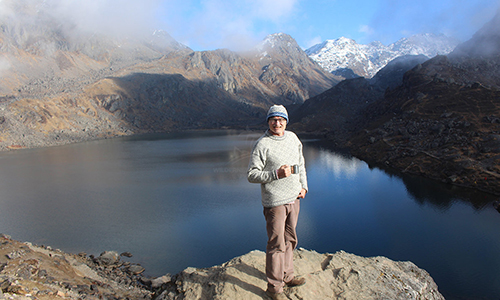


Lena Hofmann
2025-06-16 13:05:31
I had an incredible experience on the Everest Region Short Trek organized by Vyas Treks Nepal. The views of Everest, Lhotse, and Ama Dablam were absolutely breathtaking, and the trail took us through charming villages and monasteries. The team was professional, the guide was great, and the pace was perfect. This trek gives you all the highlights of the Everest region in a short time!